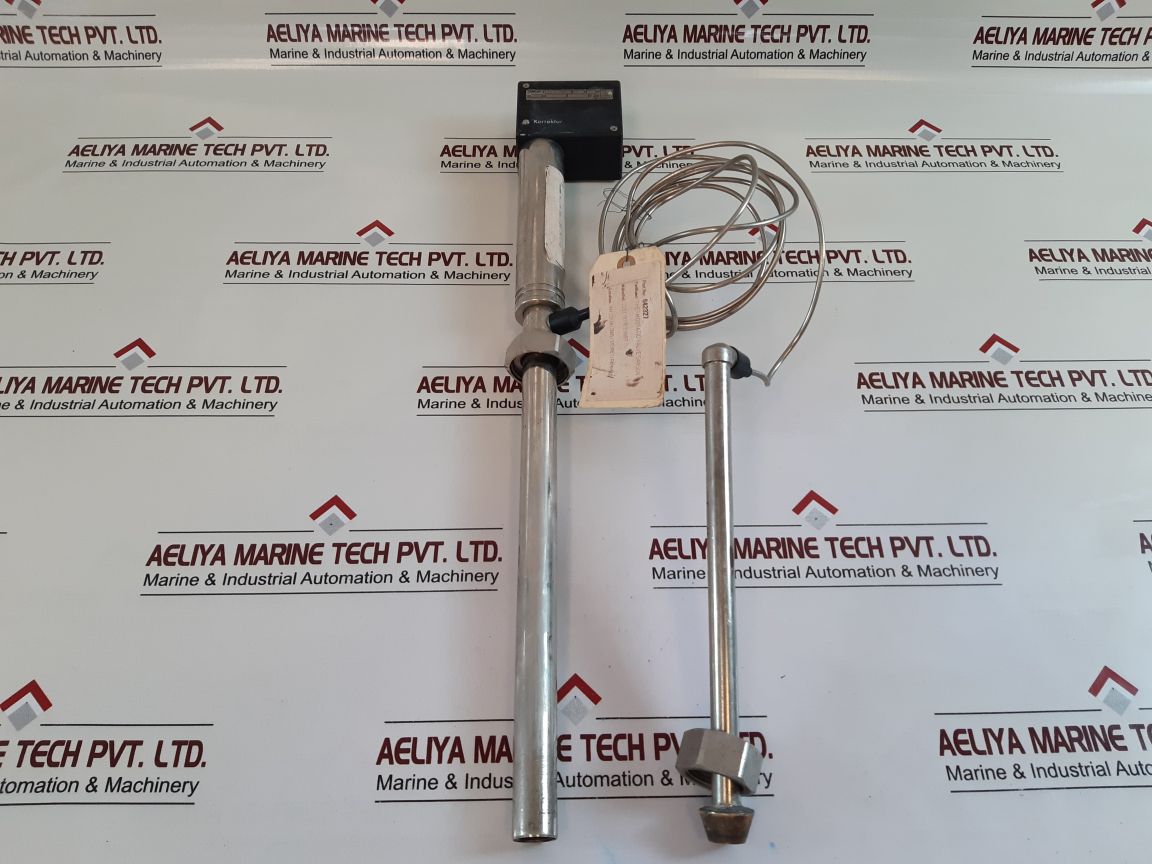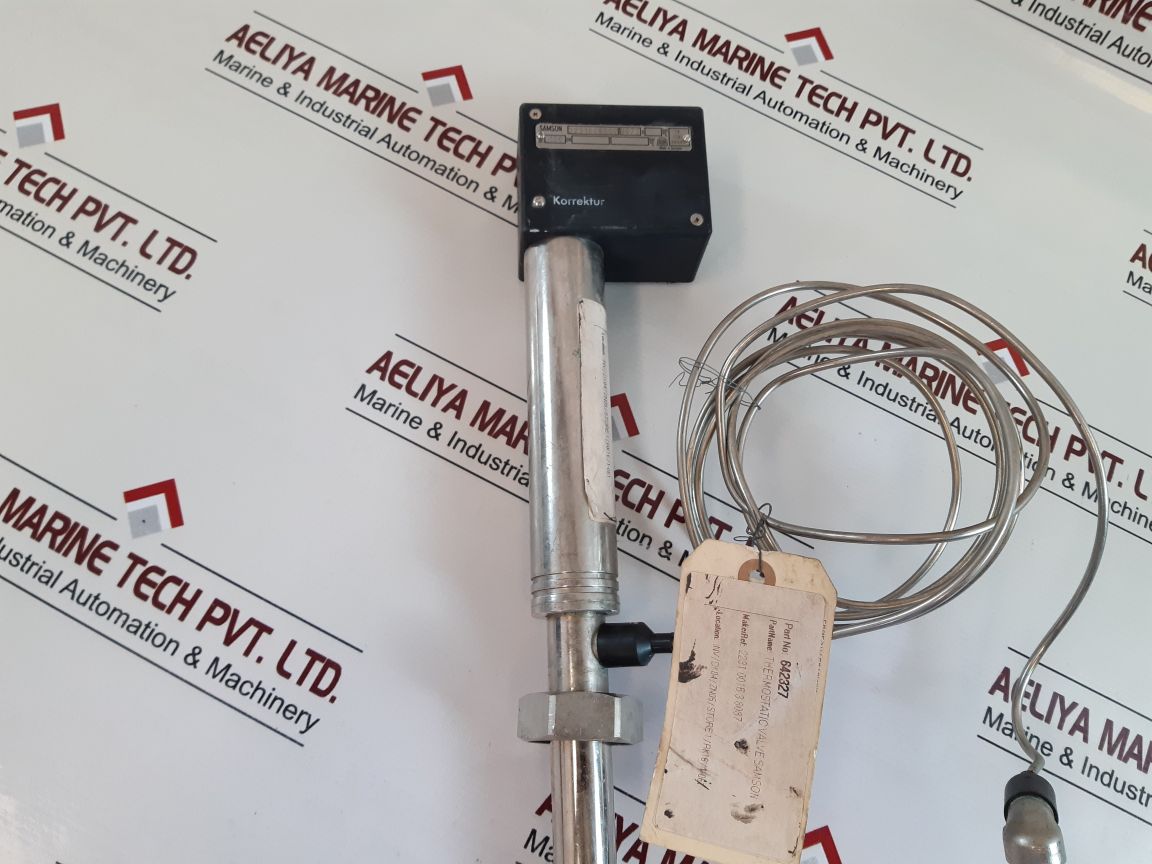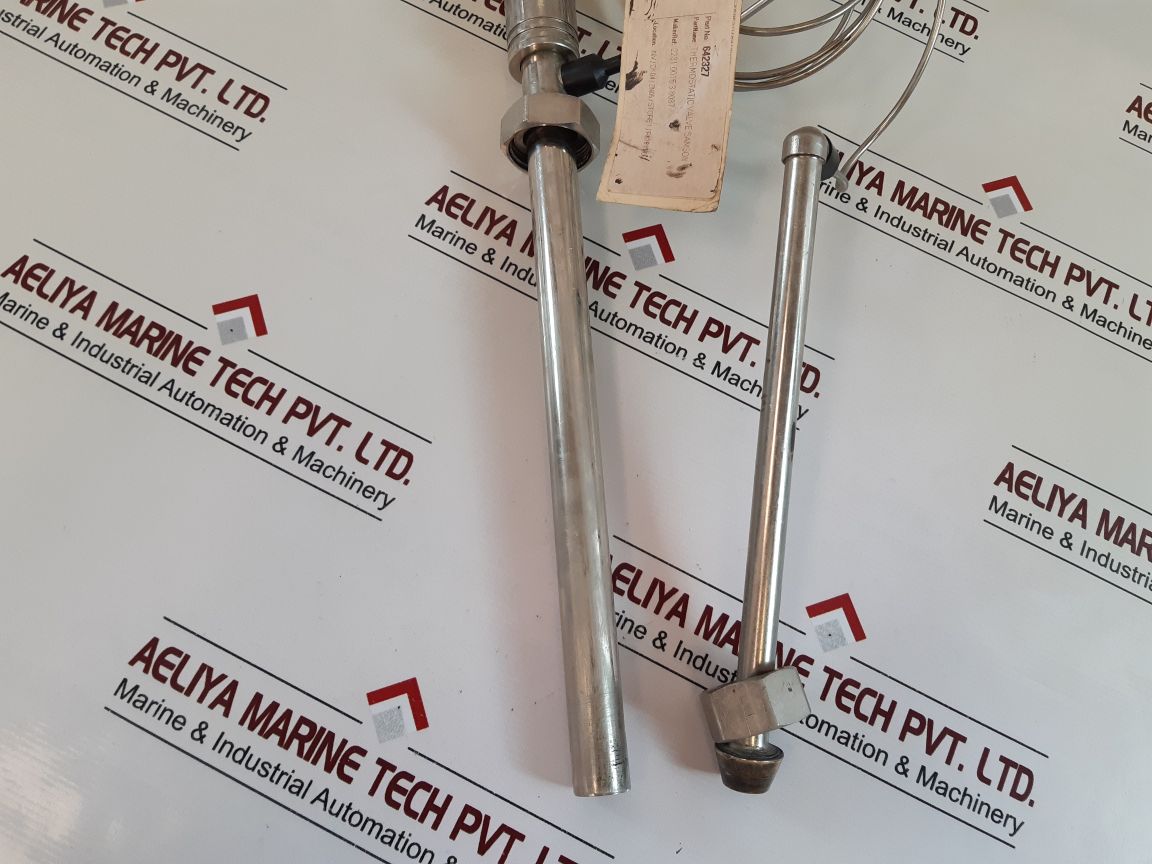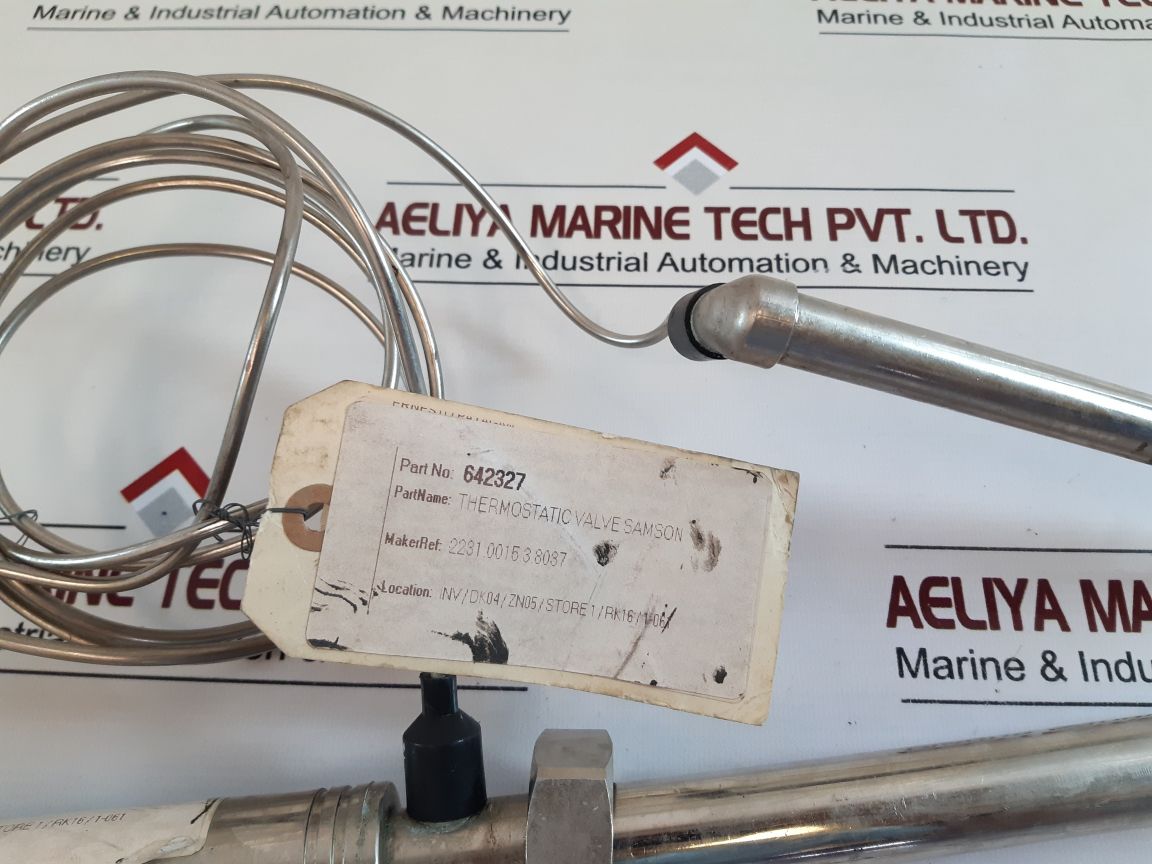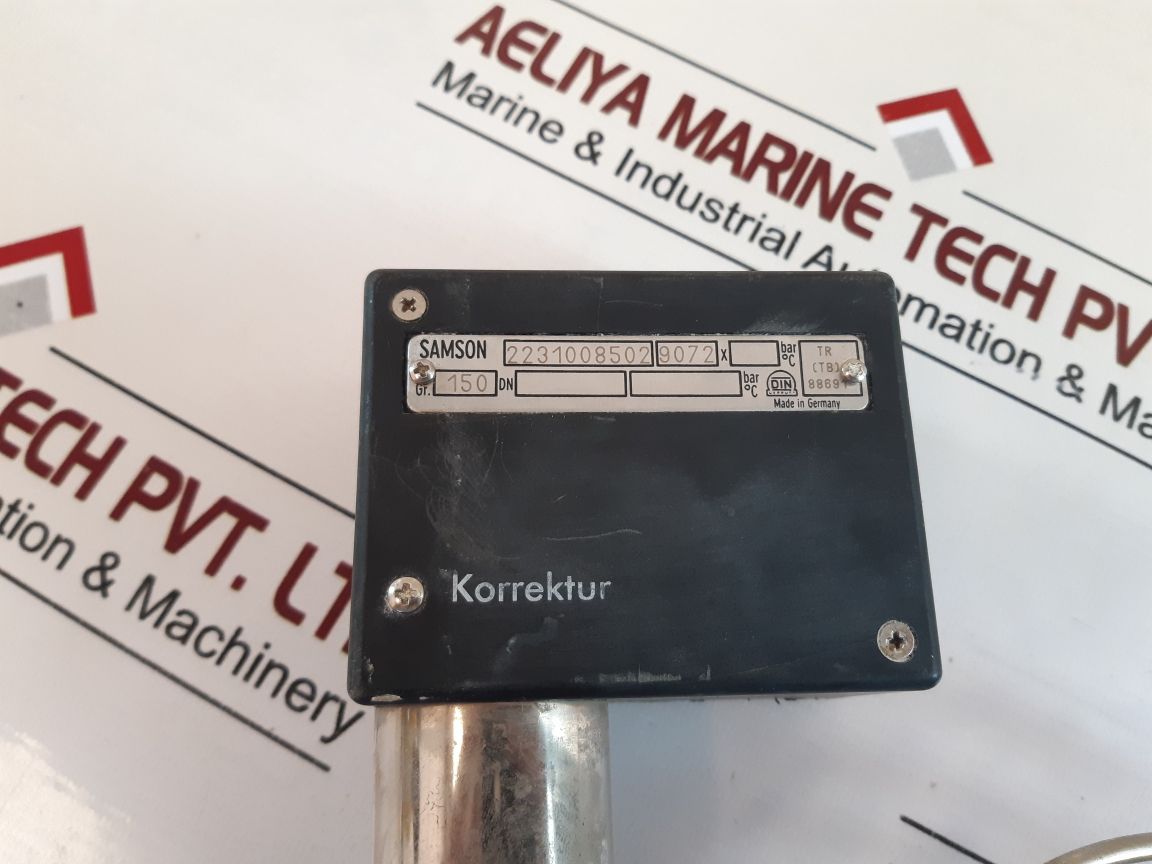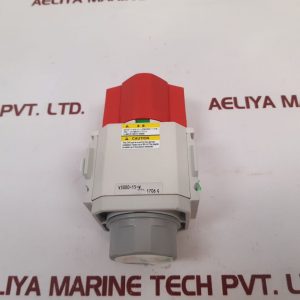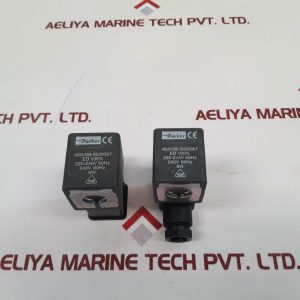SAMSON 2231 0015 3 8037 THERMOSTATIC VALVE 642327
SAMSON
2231008502 9072
GR. 150
TR (TB) 88691
70 TO 250 °F
20 TO 120 °C
PART NO: 642327
PART NAME: THERMOSTATIC VALVE SAMSON
MAKER REF: 2231 0015 3 8037
MADE IN GERMANY
WEIGHT : 3.020 KG
REF NO : 52700
What is a Thermostatic Valve?
A thermostatic valve is a specialized device designed to regulate the flow of a fluid based on temperature changes. It’s equipped with a temperature sensitive element that responds to variations in temperature, causing the valve to open or close accordingly. This mechanism allows for precise control of temperature within a system.
Applications
Thermostatic valves have a wide range of applications, including:
- HVAC systems: Controlling water temperature in heating and cooling systems for optimal comfort.
- Industrial processes: Regulating fluid temperatures in manufacturing processes.
- Automotive systems: Managing coolant temperature in engines.
How it Works Thermostatic Valve?
The SAMSON 2231 0015 3 8037, we can provide a general overview of how a thermostatic valve operates:
- Temperature Sensing: The valve contains a temperature sensitive element, often a wax-filled capsule or a bimetallic strip.
- Temperature Change: As the fluid temperature changes, the temperature sensitive element expands or contracts.
- Valve Movement: This expansion or contraction causes a mechanical linkage to move, which in turn affects the valve’s opening or closing.
- Flow Control: When the fluid temperature reaches the set point, the valve maintains a specific flow rate. If the temperature deviates, the valve adjusts the flow accordingly.
Components
- Valve Body: The primary housing that encapsulates the valve’s internal mechanisms.
- Thermostatic Element: A sensitive component that responds to temperature variations, controlling the valve’s operation.
- Valve Seat: The critical sealing surface preventing fluid leakage.
- Stem: The connecting element between the actuator and the valve’s opening mechanism.
- Actuator: The component responsible for positioning the valve based on the thermostatic element’s input.
- Packing or Seals: Components that prevent fluid leakage around the valve stem.
- Trim: Internal components influencing the valve’s flow characteristics and performance.
Features
- Temperature Control: Precisely regulates temperature based on a setpoint.
- Flow Control: Manages the flow rate of the medium through the valve.
- Thermostatic Element: Senses temperature changes and adjusts valve position accordingly.
- Material Compatibility: Constructed from materials suitable for the medium and operating conditions.
- Pressure Rating: Designed to withstand specific pressure levels.
- Connection Types: Offers various connection options for compatibility.



